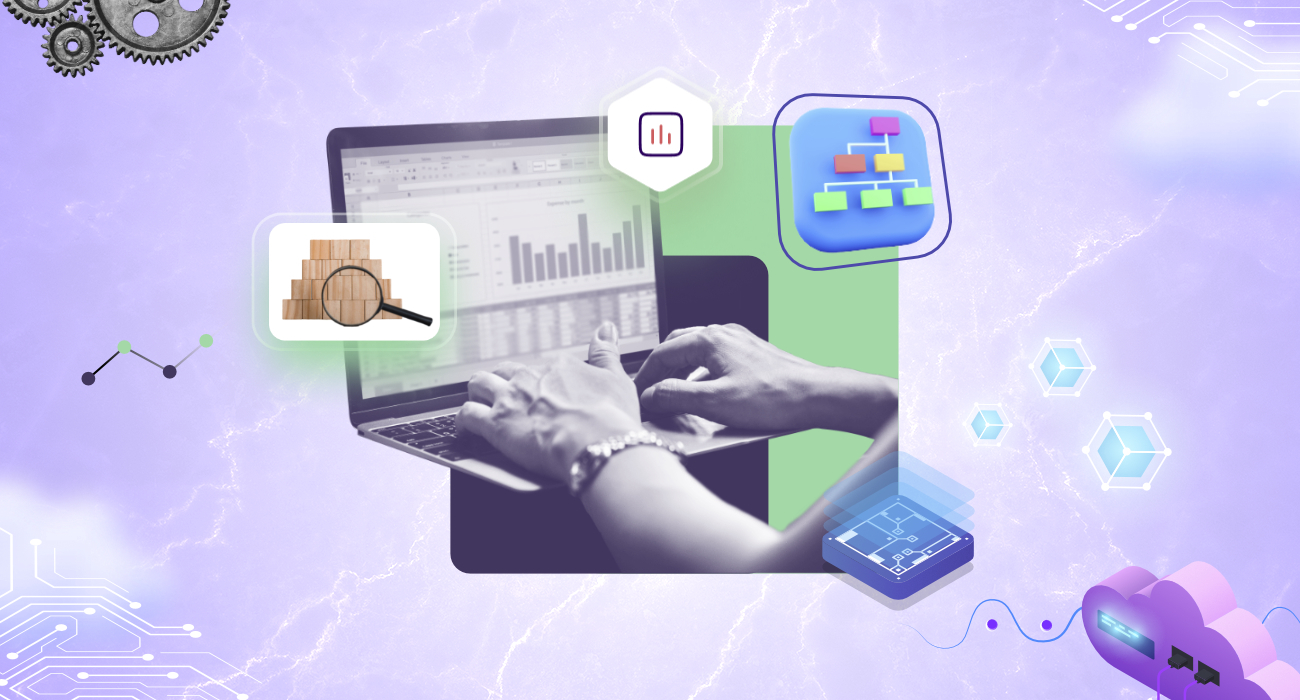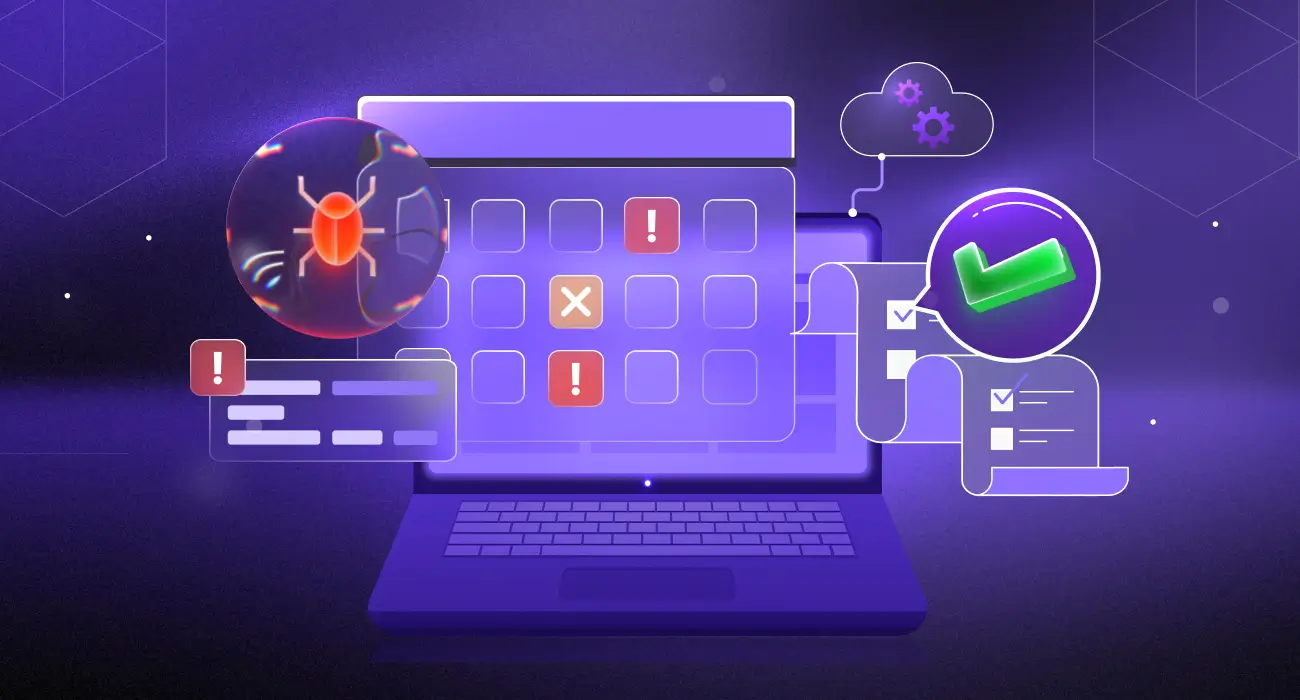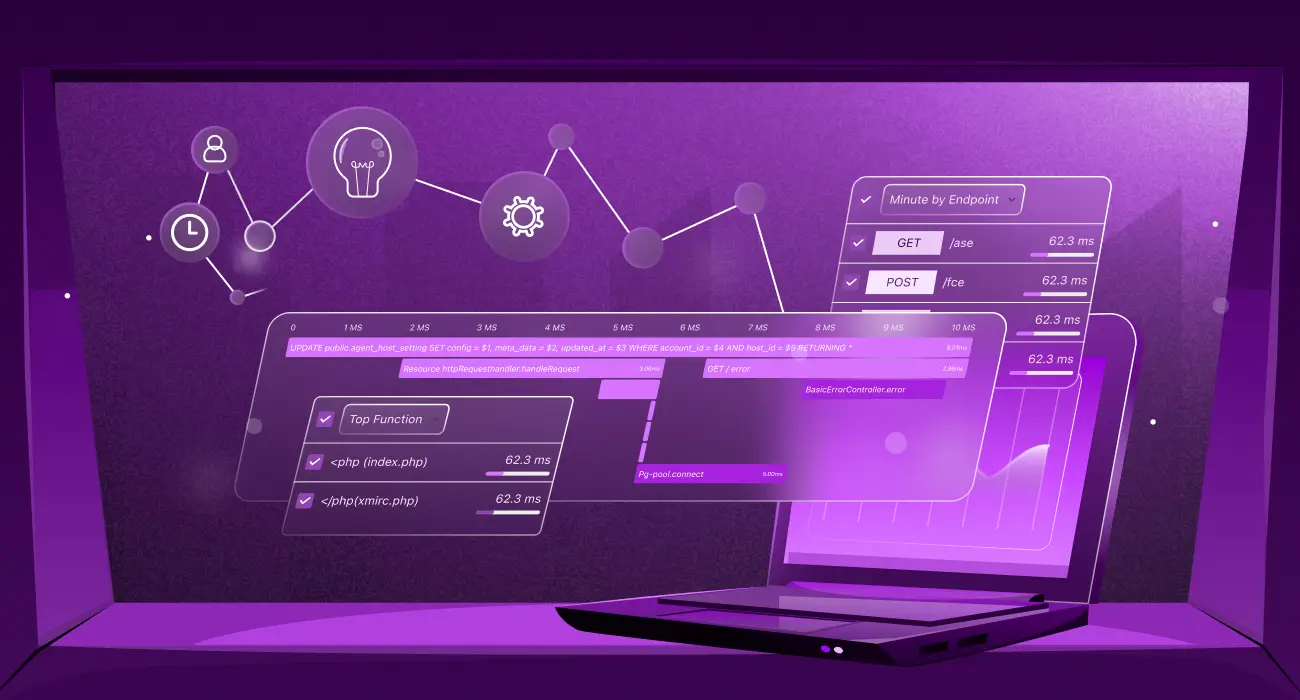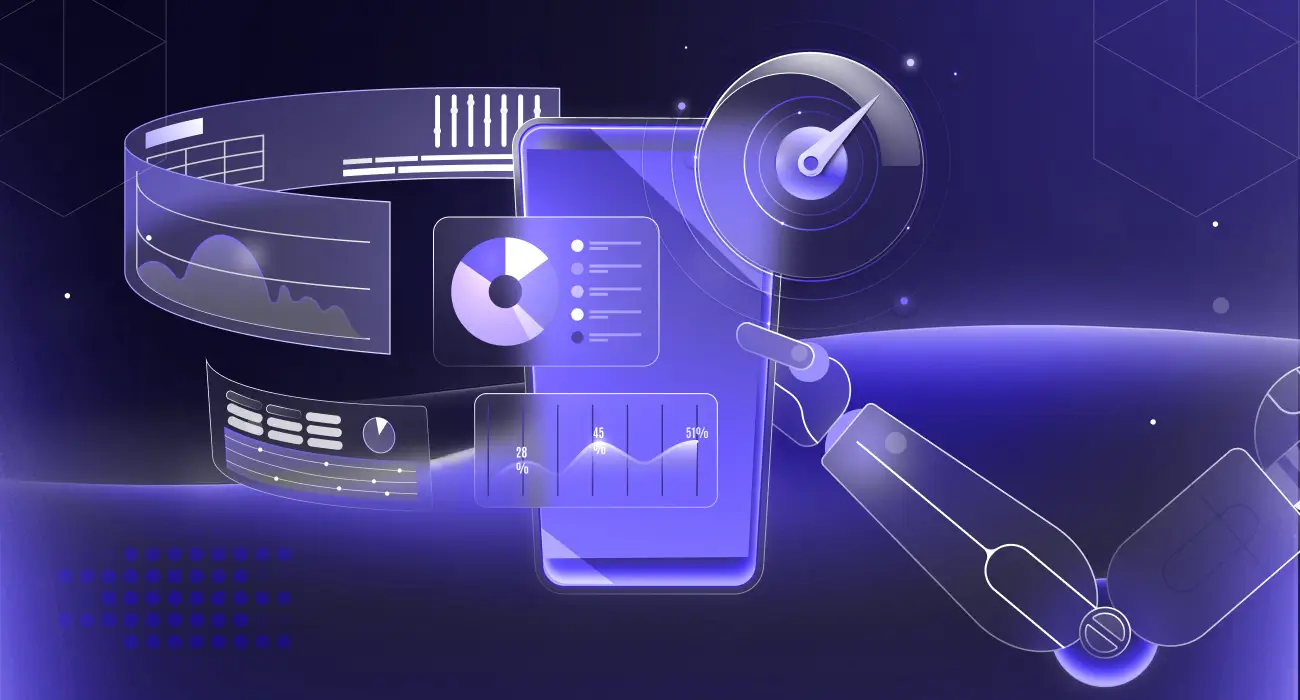Nowadays, people rely heavily on technology for various aspects of their lives — from personal communication and entertainment to critical business operations. They demand seamless and efficient experiences, showing little tolerance for system outages, irrespective of the complexity of the underlying system.
Traditional monitoring approaches, which primarily notified IT teams when something went wrong, fall short of meeting these heightened expectations. That’s why modern engineers require an immediate understanding of the root causes of problems, assess their impact on performance and user experience, and take timely corrective actions.
Observability caters to this necessity by providing a comprehensive understanding of the internal workings of complex systems by observing their external outputs, such as logs, metrics, and traces. It involves collecting, analyzing, and visualizing data generated by different components within an IT environment, such as applications, databases, networks, and infrastructure.
This shift facilitates the faster identification of patterns, anomalies, and root causes, empowering teams to proactively address issues before they escalate and impact system performance or user experience.
However, you need a structured framework to effectively unlock observability’s full potential. This is where the observability maturity model comes into the picture.
What is the observability maturity model?
The observability maturity model is a systematic approach for organizations to identify gaps in their observability practices, prioritize areas for improvement, and invest in the right tools and processes to achieve an optimal level of observability maturity. It is designed to fully leverage the power of observability to enhance system reliability, optimize performance, and deliver exceptional user experiences.
The observability maturity model helps you:
- Understand various types of data and how monitoring and observability practices can turn that data into valuable operational insights.
- Learn the differences between monitoring, observability, and AIOps (Artificial Intelligence for IT Operations). For example, monitoring is about keeping an eye on specific metrics, while observability is about understanding the overall behavior of your systems, and AIOps uses artificial intelligence to improve monitoring and observability.
- Figure out where your organization stands in terms of monitoring and observability capabilities by comparing the existing practices against the model’s criteria for each level.
- Outline the next set of objectives, tools, and processes required to progress to the next higher maturity level.
- And finally, identify the challenges you might face as you try to improve.
3 things you should know about the observability maturity model
Now that you know what the observability maturity model is, let’s understand its needs, levels, and capabilities.
1. Why do you need an observability maturity model?
90% of IT professionals acknowledge observability as strategically significant for their business. Here’s why:
Evolving monitoring needs
For decades, organizations have been using traditional monitoring to assess the system’s health and performance. However, as IT environments evolve to become more complex, distributed, and interconnected, these approaches may no longer suffice.
An observability maturity model helps organizations adapt to these changing needs by providing a more comprehensive understanding of system behavior and analyzing different data sources, including logs, metrics, and traces.
Further, traditional monitoring systems are reactive, alerting teams only after an issue has occurred. This hinders the ability to proactively identify and mitigate potential problems before they negatively impact system performance, user experience, or business outcomes.
Observability tools come to the rescue by tracing the issue back to its root cause — whether it’s a code error, configuration issue, or infrastructure bottleneck. This enables faster resolution and reduces downtime.
Further, leveraging generative AI can significantly enhance the organization’s ability to detect and respond to system failures. In fact, you can combine this with observability to address issues before they impact users or business operations, minimizing downtime and maximizing system availability. Not only does it analyze vast amounts of data from system logs, metrics, and traces to identify patterns indicative of potential failures but also predict failures before they happen.
Siloed, ineffective tools
A report suggests that 60% of IT and software engineers believe that most monitoring tools operate in silos, serving specific requirements and failing to provide a complete picture of current operating conditions. This lack of a comprehensive view can make it difficult for teams to identify and resolve issues effectively, as they may only have access to fragmented information from individual tools.
Further, 61% agree that IT staff productivity and collaboration are hindered by specialized tools and siloed data views. This leads to inefficiencies, longer resolution times, and potential blind spots in understanding and addressing system-wide issues.
The observability maturity model helps organizations overcome this limitation by enabling them to collect, integrate, and correlate data from multiple sources, providing a complete understanding of the system’s overall state.
Emerging architectures and technologies
The shift towards modern architectures and technologies, such as cloud, containers, microservices, and serverless has introduced new complexities and challenges that traditional monitoring is ill-equipped to handle effectively.
Consider an example of an e-commerce platform built on a microservices architecture and deployed in a cloud-native environment. Such a system might consist of various components, such as the web frontend, product catalog service, shopping cart service, payment gateway integration, and databases, each potentially running in separate containers or serverless functions.
In a traditional monitoring setup, teams might focus on tracking specific metrics like server CPU usage, database query times, and error rates. However, in such a distributed and interconnected system, issues can arise from interactions and dependencies between various components. This makes it challenging to pinpoint root causes and understand the full impact of a problem based on monitoring data.
The observability maturity model helps organizations navigate these complexities by giving them a roadmap to transition from traditional monitoring to advanced, proactive practices.
2. Four levels of the observability maturity model
The observability maturity model outlines four levels, guiding organizations from basic observability practices to more advanced and comprehensive approaches.
Each level serves as a benchmark for organizations to assess their current observability maturity. By evaluating their practices against the criteria defined at each level, organizations can identify gaps and prioritize areas for improvement.
This allows teams to gradually enhance their observability capabilities over time, rather than attempting to achieve full observability all at once. Plus, they can know where they stand and what steps they need to take to advance to the next level.
Level 1: Monitoring
Imagine you’re checking your health with a basic thermometer. It alerts you when you have a fever, indicating that something might be wrong, but it doesn’t provide much detail about the underlying issue.
That’s exactly what monitoring is.
Monitoring in IT environments is not a new concept. It focuses on ensuring individual components are working as expected.
For example, monitoring tools continuously monitor server CPU usage to ensure that it remains within acceptable limits. If CPU usage exceeds a predefined threshold, indicating potential performance degradation, the monitoring tool triggers an alert to notify IT personnel.
While these tools provide basic insights into the system’s health, they may lack the depth and context needed to understand the root causes of problems or anticipate issues before they occur.
Level 2: Observability
Now, imagine upgrading to more advanced diagnostic tools like blood tests and X-rays. These tools give you deeper insights into what’s causing the fever, allowing you to pinpoint the specific illness or condition.
This is called observability.
Observability enables organizations to move beyond detecting issues to determining why the system is not working as intended. It provides detailed insights into system behavior by analyzing metrics, logs, and traces, and fosters proactive management of IT resources.
For example, in addition to monitoring CPU usage, observability tools analyze application logs to detect errors or anomalies that may impact system performance or user experience. This way, IT teams can gain in-depth understanding of the root causes of issues and identify areas for optimization.
Level 3: Causal observability
At the third level of the observability maturity model, organizations advance beyond basic monitoring and enhanced observability to reach a state of causal observability.
This is similar to having access to even more comprehensive diagnostic capabilities, such as MRI scans and genetic testing. These tools not only identify the main cause of the fever but also assess its broader impact on your overall health.
At this level, observability tools enable organizations to track topology changes over time within their IT environments. Plus, they can generate correlated data from multiple sources to identify the issue, when and why it occurred, and what other areas were affected.
For example, consider an e-commerce platform experiencing a sudden increase in transaction failures. At this level, organizations can correlate data from application logs, server metrics, and network traces to find the specific component or service causing the issue. They can also assess how this incident affects other parts of the system, such as customer experience and revenue generation.
Level 4: Proactive observability with AIOps
The highest level of observability maturity model leverages artificial intelligence and machine learning to proactively analyze large volumes of data. By combining AI/ML with the data from the previous levels, organizations can detect anomalies early and take automated actions to prevent them from escalating.
This advanced observability layer builds upon previous levels, adding features like pattern recognition, anomaly detection, and recommendations for remediation. It is like having a team of specialized doctors equipped with cutting-edge technology and AI algorithms. They continuously monitor your health data, detect early warning signs of potential illnesses, and take remedial measures to prevent them from becoming serious.
The key progression here is moving from simply reacting to problems, to understanding why they happen, to finally anticipating and preventing issues before they impact the business. This approach not only enhances system reliability and performance but also optimizes resource utilization and reduces operational costs. Plus, it boosts efficiency as teams get extra time to focus on more critical events.
3. Two key capabilities
The observability maturity model outlines various capabilities that serve as guiding principles for organizations aiming to improve their monitoring practices. These provide a structured framework for transitioning towards a more advanced and comprehensive approach to observability.
Although there is an exhaustive list of capabilities, we’ll focus on discussing only two in detail.
Respond to system failure with resilience
Resilience refers to the ability of a team and the system it supports to quickly detect, mitigate, and fully understand and address system failures. This includes not only the system’s robustness in handling failures but also its ability to detect and respond to anomalies rapidly, mitigate their impact, and understand the root causes to prevent similar issues in the future.
It’s not just about the system — it’s also about the people operating it. Make sure on-call duties don’t stress out your team members or make them quit. Train everyone to handle emergencies safely, without feeling overwhelmed. However, assigning many people to on-call and break-fix duties can take away time and energy from value-generating tasks, harming team morale and productivity in the long run.
How does observability help?
Observability tools provide relevant, actionable alerts containing detailed information about the issue at hand, its context, and potential impact. This enables team members to quickly understand the issue and take appropriate action to address it, reducing the stress and drudgery associated with on-call rotations.
Further, skills are distributed across the team so that all members are equipped with the necessary knowledge to respond to incidents promptly, without relying on a few individuals with specialized expertise.
Not only that, observability tools provide teams with highly cardinal data, such as logs, metrics, and traces, with accompanying context. This facilitates fast resolution of issues by allowing team members to analyze and troubleshoot problems more effectively.
Deliver high-quality code
High-quality code refers to code that functions correctly and meets certain standards of readability, maintenance, and efficiency. It must be highly adaptable to changing business needs and validated for its behavior during actual production conditions that matter to customers.
If a team is doing well with code quality, the code is stable, leading to fewer bugs and outages in production. Additionally, engineers effortlessly debug problems at any stage, and isolated issues can usually be resolved without causing widespread failures.
On the other hand, if a team is struggling with code quality, customer support costs are high. Engineers devote a considerable amount of time to fixing bugs instead of developing new features. Plus, team members feel reluctant to deploy new modules due to perceived risks. And, it takes a long time to identify an issue, construct a repro, and repair it.
How does observability help?
Observability plays a crucial role by providing insights into code performance and vulnerabilities. Thoroughly monitored and tracked code facilitates quick detection and resolution of issues, regardless of the scale. Effective observability enables using the same tools to debug code — whether it’s on a single machine or 10,000.
Further, relevant, context-rich telemetry enables engineers to observe code behavior in real-time, receive rapid alerts, and repair issues before they become visible to customers.
In short, observability streamlines debugging workflows, accelerates incident response, and ultimately enhances the overall reliability and resilience of software systems.
Summing up
Observability isn’t just a nice-to-have feature—it’s essential for modern IT systems. Leveraging the observability maturity model is essential to keep your technology running smoothly, ensuring peak performance and reliability in today’s fast-paced, complex digital world.
Adopting an observability platform can greatly aid organizations in their journey toward observability maturity. These platforms provide a comprehensive suite of tools and capabilities for monitoring, alerting, tracing, data collection, and analysis — allowing teams to effectively implement and advance their observability practices.
Middleware is a powerful solution that offers comprehensive monitoring and observability capabilities across your cloud infrastructure. To know more, schedule a free demo with us today!



